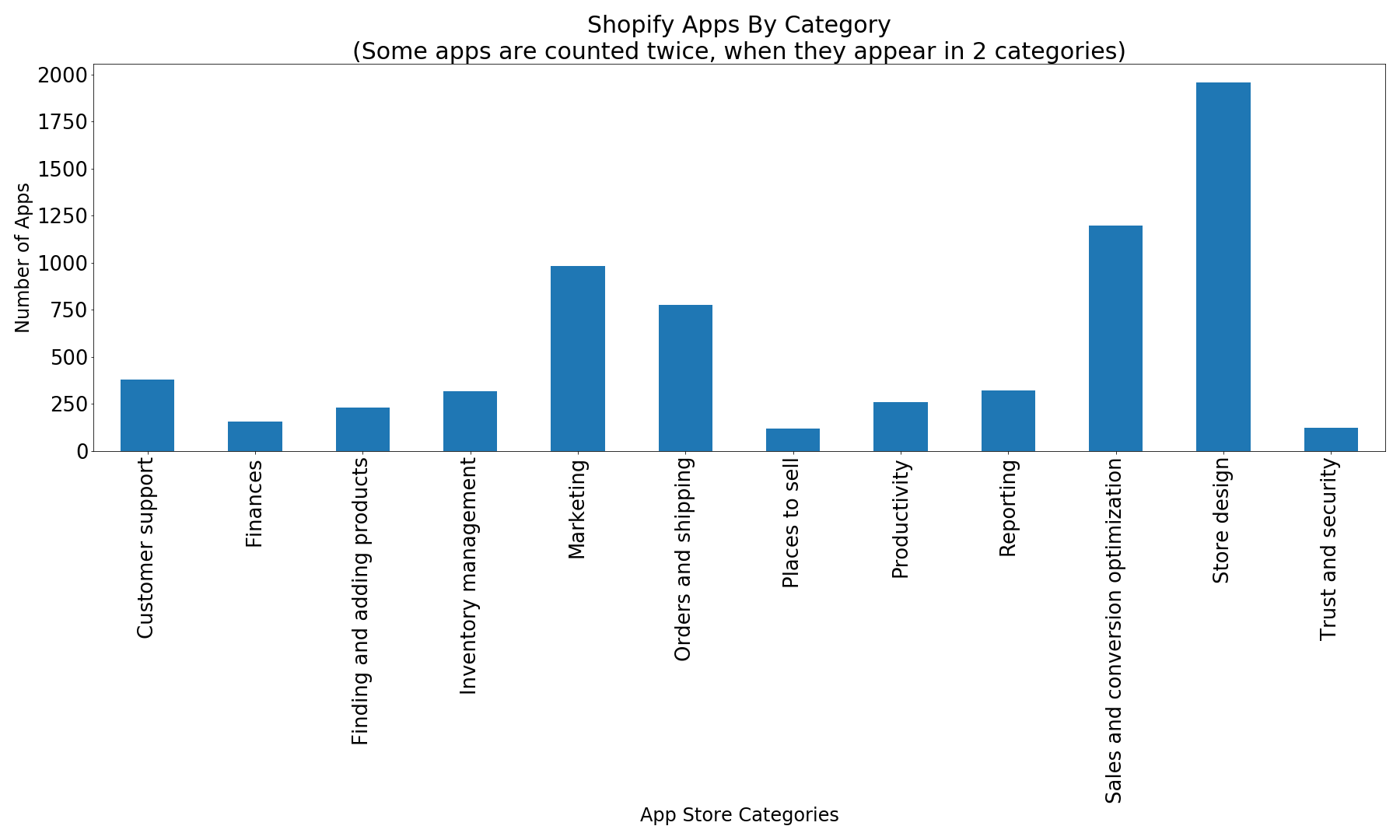Shopify app store analysis
18 Jul 2020With coronavirus lock-down v2 (in Melbourne, Australia) I’ve found myself with a bit of extra time. This extra time, in conjunction with the eCommerce boom has led me to think about how I could help small business owners.
After I came up with a few ideas it was time to do some validation before I started to build anything.
My first goal was to see if there are any notable trends in one of the larger eCommerce app stores / marketplaces. I selected Shopify given its popularity and maturity.
Now, before I go any further I just want to clarify this is not a research paper! It’s just a few hours of work and some wild assumptions.
My Goal
Before I started, I set a few goals. Here they are:
- Count the number of apps (both the overall total and each categories totals)
- Identify the category trends (looking for popular categories e.g. high number of reviews)
- Check the customer satisfaction trends (looking for categories with unhappy customers e.g. more negative reviews then positive)
- Avoid manual tasks as much as possible (so I can re-run the analysis on demand)
Approach
Here is my process (sounds simple, right?):
- Collect all the data (into a database / csv file)
- Run the analysis
- Create a report with some fancy graphs
Observations
- It’s not possible to know exactly how many installs / customers each app has.
- The quantity (and quality) of customer reviews is one way to determine the popularity of an app
- Apps are sometimes listed in 2 categories (I have included some comments on how this has been handled)
- I’ve interpreted positive reviews as being 4 stars or more and negative reviews being 3 stars or less
The tools
There are many suitable tools & libraries. I’ve selected a few that I’m familiar with and some others that I wanted to learn. Here is what I used:
- Python (programming language)
- Scrapy (web scraping)
- Pandas (data structure)
- NumPy (maths)
- Pyplot (graphing)
- Jupyter notebook (debugging / sharing the code)
- GitHub (source control)
- My brain (for some good and bad ideas)
The results
There are 4,422 apps and 922 of them have 0 customer reviews. Conveniently that leaves 3,500 apps with 1 or more customer reviews.
App By Categories
There are 12 top level categories.
Here are the number of apps by category:
Customer Reviews
There are a total of 428,280 customer reviews.
Here are the reviews over time:
Here are the reviews by category:
Monthly reviews by category (Postive >= 4 stars, Negative <=3 stars):
My observations
- From ~2016 there have been 3 categories that started collecting a lot of customer reviews. I have interpreted this as a sign of demand / popularity. These categories are (1) Sales & Conversion optimization, (2) Marketing, (3) Store Design
- The ‘places to sell category’ was relatively even in terms of positive and negative reviews up until mid 2019. Several of the apps had been attracting a lot of negative reviews.
- Customer reviews have increased across the board since the early part of 2020. In my opinion (not validated) - it’s likely that there are more eCommerce stores & app purchases due to COVID19.














